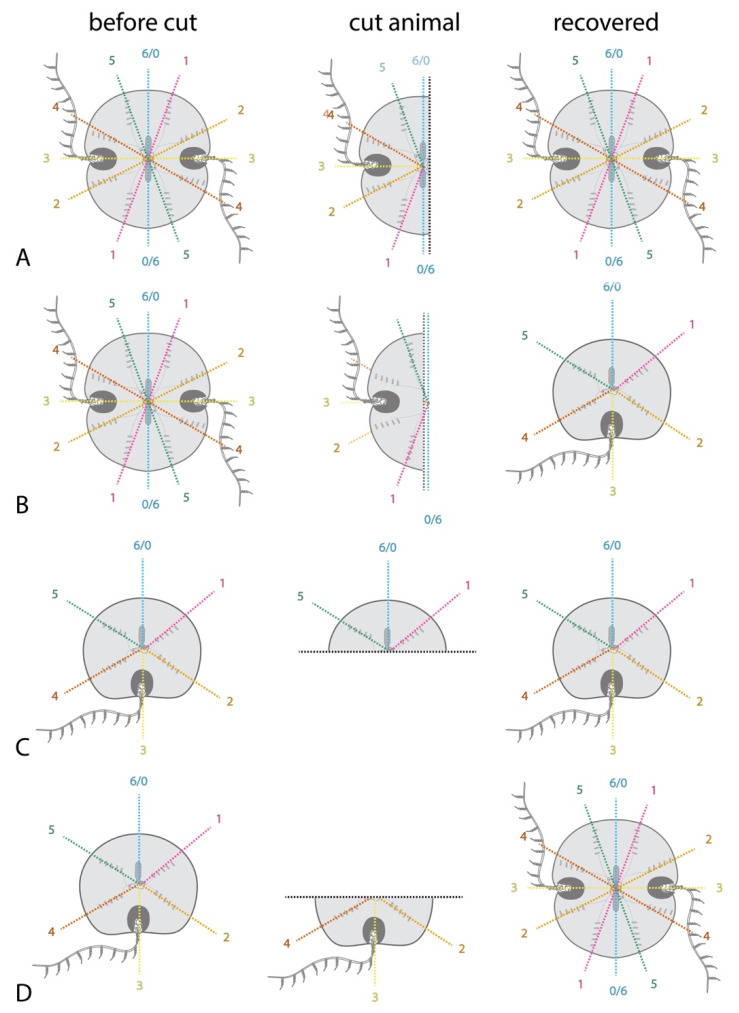Figure 3.
The apical organ serves as an organizing center to pattern the body axes during regeneration. The polar coordinate system of the ctenophore’s biradial body plan is indicated with differently colored lines for each plane of mirror symmetry; the identity of these planes is conventionally designated with a number as shown. (A) When a normal animal is bisected sparing the apical organ, it most often regenerates into a whole animal with two of each body part. (B) When the apical organ is not present, the bisected half may regenerate into a normal animal as in (A) but is more likely to become a stable half animal with one (instead of two) of each body part and no planes of mirror symmetry. The half-animal includes one tentacle bulb, one anal pore, half an apical organ, and half the normal complement of comb rows. (C) A “stable half-animal”, as generated in (B) or through embryonic deletion of half the body structures, can be bisected again. The fragment with the retained “half apical organ”, regenerates into a half animal. (D) In contrast, the fragment of the “half animal” lacking any apical organ can regenerate into an animal with all the body parts and axes of mirror symmetry present in a normal animal, including a whole apical organ. These results strongly suggest that the apical organ directs patterning when present. Removal of a half apical organ, which would otherwise direct patterning into a half-animal, allows the animal fragment lacking an apical organ to re-pattern normally (as a minority of animals cut as in (B) would do).

